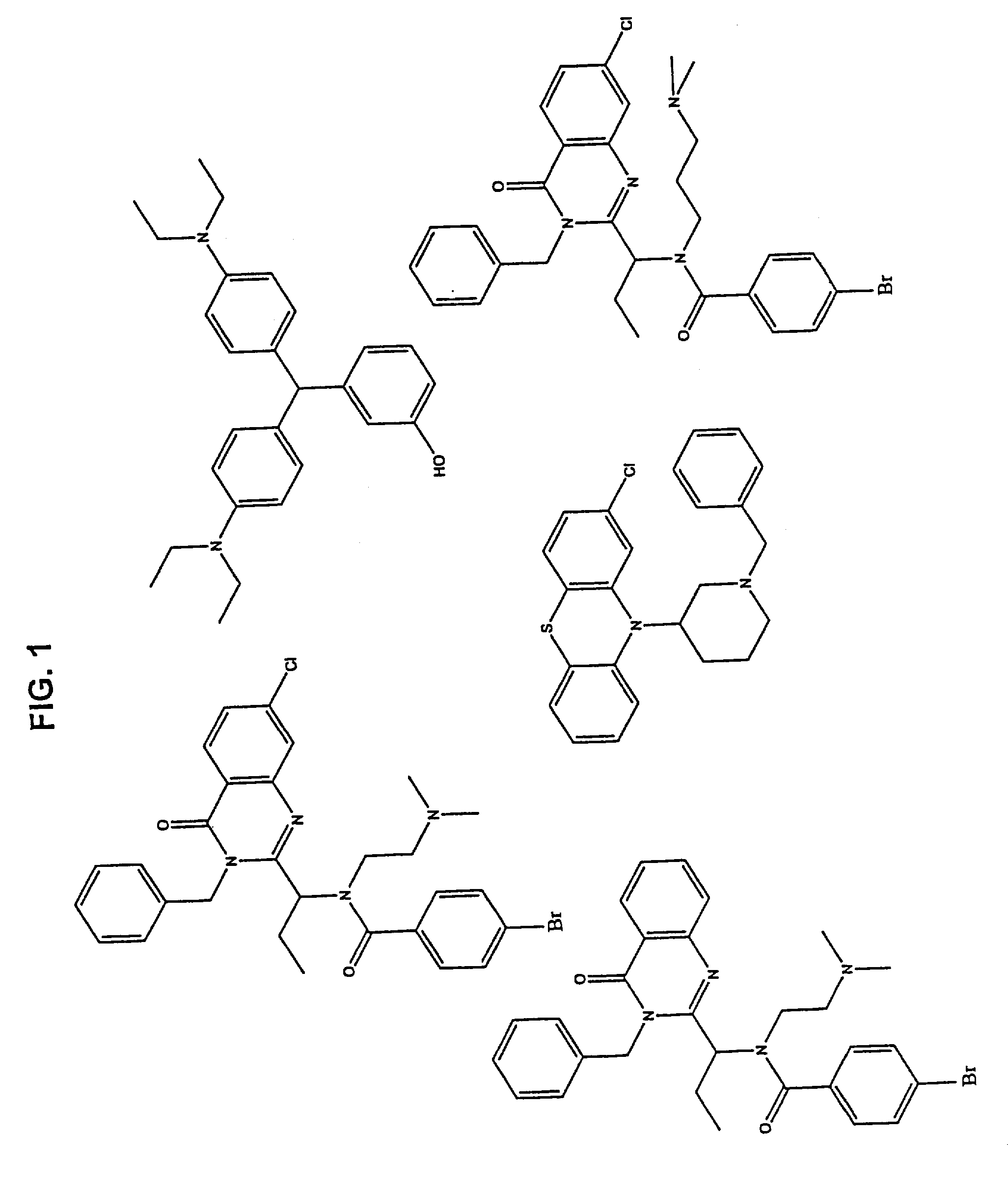Methods for screening and therapeutic applications of kinesin modulators
a technology of kinesin modulator and screening method, which is applied in the field of molecular biology and medicine, can solve the problems of mitotic arrest and monopolar spindles, and achieve the effect of inhibiting the bioactivity of ksp
- Summary
- Abstract
- Description
- Claims
- Application Information
AI Technical Summary
Benefits of technology
Problems solved by technology
Method used
Image
Examples
example 1
Assays for Studying Kinesin Inhibition
[0084]The following assay can be used to identify compounds which inhibit microtubule-stimulated ATPase activity of KSP.
[0085]KSP was expressed in and isolated from a bacterial-based expression system using the methods described in U.S. Ser. No. 09 / 295,612, filed Apr. 20, 1999, which is incorporated herein by reference. The KSP constructs comprise the KSP motor domain and varying lengths of the carboxyl-terminal portion of the KSP protein. In some cases, the KSP construct also contain affinity tags (e.g., hexahistidine) to aid in purification.
[0086]Two specific solutions were used in the assay. Solution A was prepared by adding 1 mM ATP, 2 mM phosphoenolpyruvate in a working buffer (25 mM Pipes pH 6.8, 2 mM MgCl2, 1 mM EGTA, 1 mM DTT, 5 μM taxol, 25 ppm Antifoam). The pH of Solution A was adjusted to 6.8 with KOH after all ingredients are added. Solution B contains 0.6 mM NADH, 0.2 mg / ml BSA, 1:100 dilution of PK / LDH mixture from Sigma, 200 μg / m...
example 2
Identification and Characterization of KSP Inhibitors
[0092]Using the methods as described in Example 1, various KSP inhibitors were identified. Compounds with a detectable effect on the ATPase activity were identified. FIG. 1 shows representative compounds that interact with the Loop 5 region of KSP and thereby modulate the biological activity of KSP.
example 3
Identification of L5 Loop as the Binding Site of Kinesin Inhibitors
[0093]To further confirm that the L5 region of KSP (Gly117 to Gly134) is the binding site of the KSP inhibitors, KSP L5 was replaced by the L5 loop of KHC (Gly97 to Gly106). The KSP-KHC hybrid in which L5 of KSP was replaced by a corresponding region (Gly97 to Gly106) taken from human kinesin heavy chain (KHC) was constructed byconventional methods.
[0094]The hybrid KSP protein was found to retain its microtubule stimulated ATPase using assays described in Example 1. The hybrid was also examined for inhibition by the various KSP inhibitors as described in Example 2. The results indicate that except for one inhibitor, which maintained its inhibitory effect on the ATPase activity of the hybrid KSP, the other KSP inhibitors lost their inhibitory effects.
PUM
 Login to View More
Login to View More Abstract
Description
Claims
Application Information
 Login to View More
Login to View More - R&D
- Intellectual Property
- Life Sciences
- Materials
- Tech Scout
- Unparalleled Data Quality
- Higher Quality Content
- 60% Fewer Hallucinations
Browse by: Latest US Patents, China's latest patents, Technical Efficacy Thesaurus, Application Domain, Technology Topic, Popular Technical Reports.
© 2025 PatSnap. All rights reserved.Legal|Privacy policy|Modern Slavery Act Transparency Statement|Sitemap|About US| Contact US: help@patsnap.com



